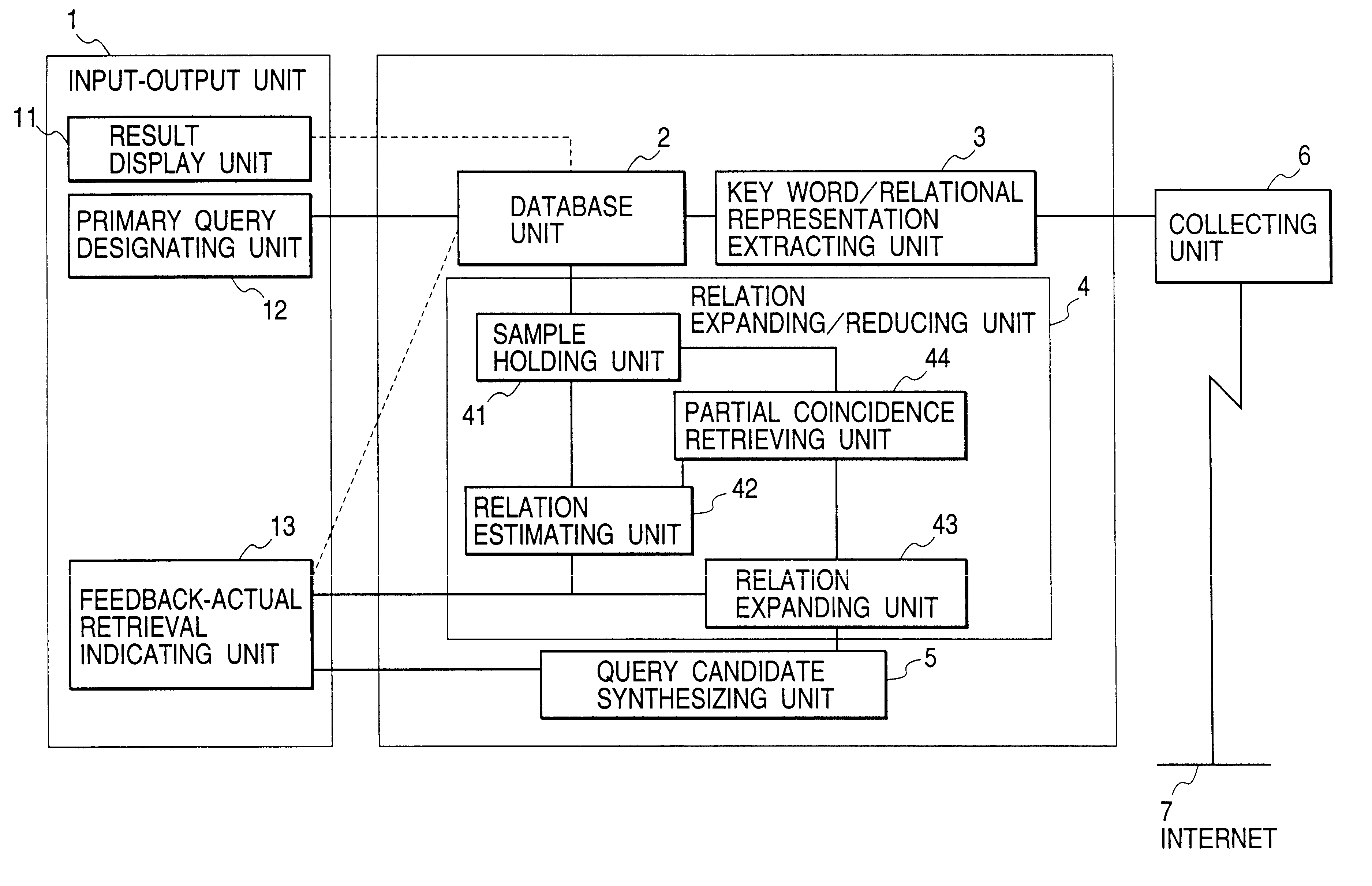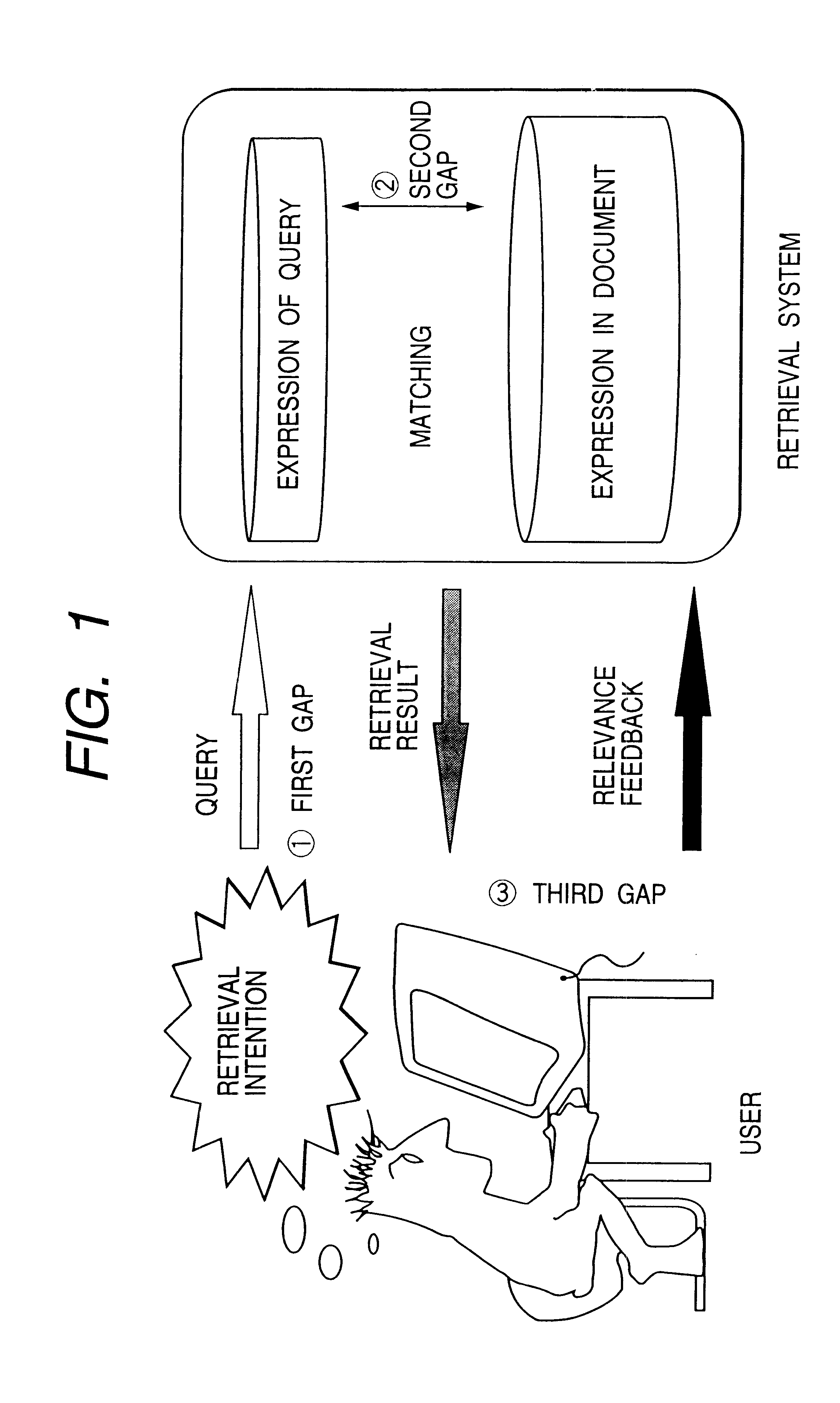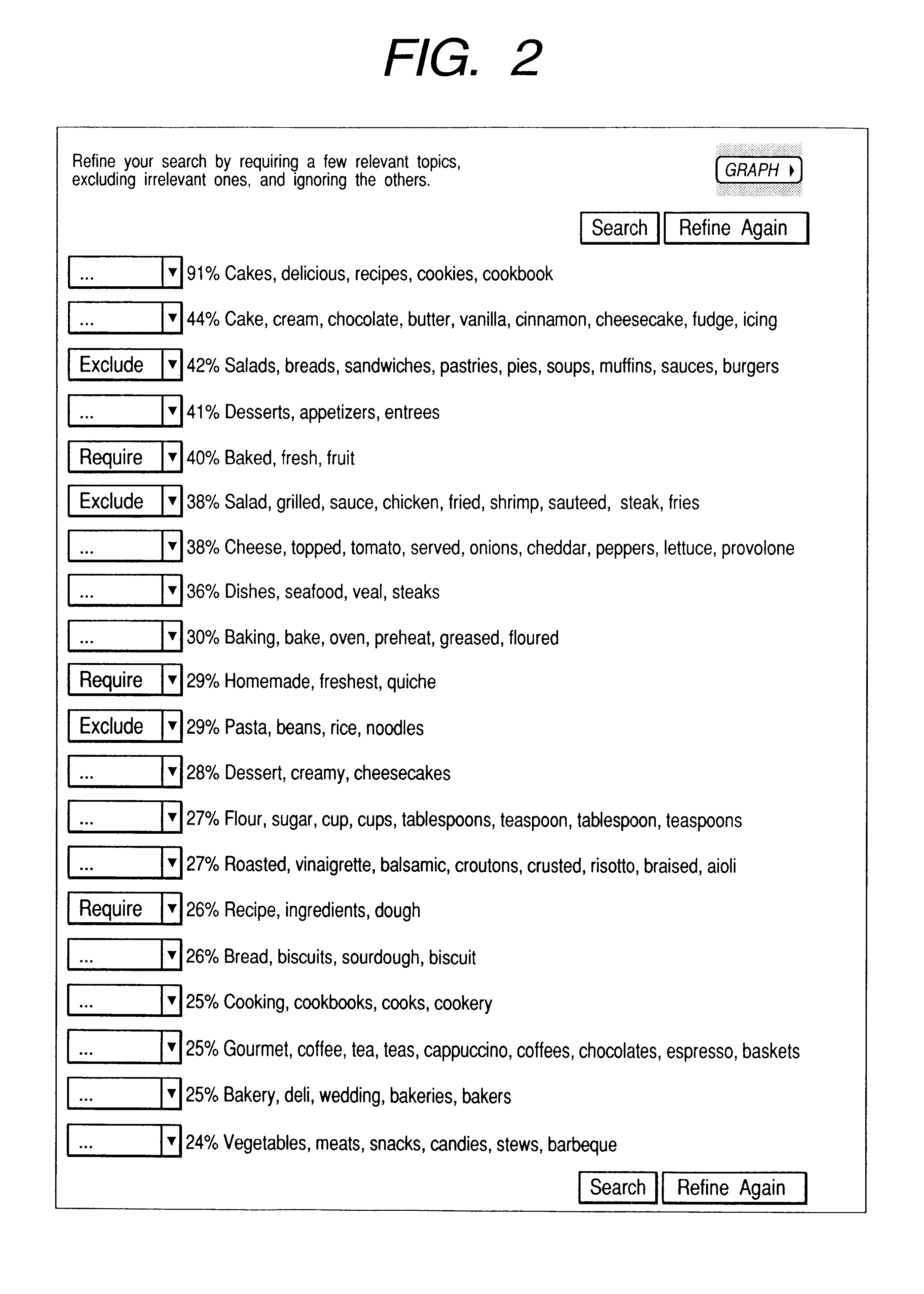Apparatus and method for document retrieval
a document retrieval and document technology, applied in the field of system and method for supporting information retrieval in database, can solve the problems of difficult to judge whether the result of retrieval is obtained, influence of a change in query, and difficulty in the presentation of query itsel
- Summary
- Abstract
- Description
- Claims
- Application Information
AI Technical Summary
Problems solved by technology
Method used
Image
Examples
Embodiment Construction
Referring to FIG. 5, there is illustrated a schematic configuration of a document retrieval system according to an embodiment of the present invention.
In the same figure, an input-output unit 1 comprises a result display unit 11, a primary query designating unit 12, and a feedback-actual retrieval indicating unit 13, and it is connected to the document retrieval system of this embodiment through a network. A document group collected beforehand from an Internet 7 by a collecting unit 6 is subjected to indexing in a key word / relational representation extracting unit 3 and is then held in a database unit 2. The database unit 2 is also connected to both a relation expanding / reducing unit 4 and the input-output unit 1. The relation expanding / reducing unit 4 comprises a sample holding unit 41, a relation estimating unit 42, a relation expanding unit 43, and a partial coincidence retrieving unit 44, and is connected to a query candidate synthesizing unit 5.
In the Internet environment the i...
PUM
 Login to View More
Login to View More Abstract
Description
Claims
Application Information
 Login to View More
Login to View More - R&D
- Intellectual Property
- Life Sciences
- Materials
- Tech Scout
- Unparalleled Data Quality
- Higher Quality Content
- 60% Fewer Hallucinations
Browse by: Latest US Patents, China's latest patents, Technical Efficacy Thesaurus, Application Domain, Technology Topic, Popular Technical Reports.
© 2025 PatSnap. All rights reserved.Legal|Privacy policy|Modern Slavery Act Transparency Statement|Sitemap|About US| Contact US: help@patsnap.com



